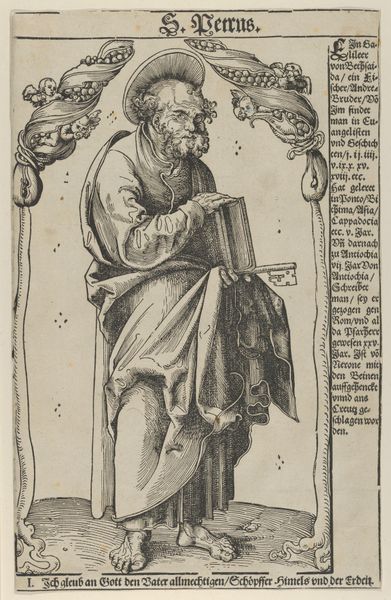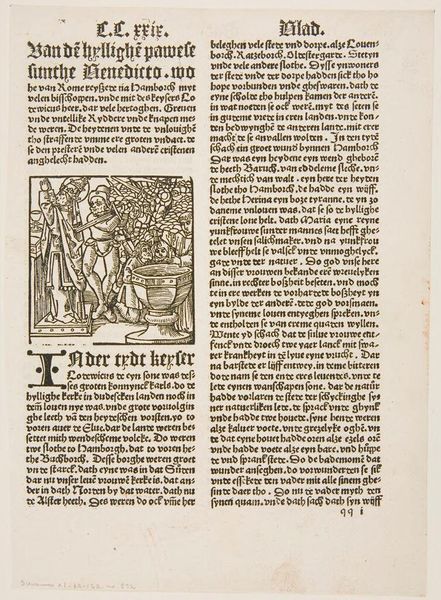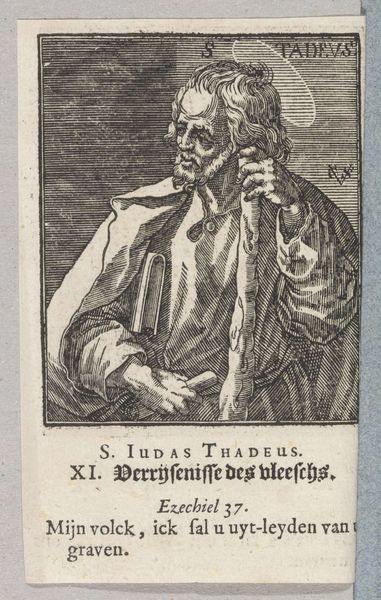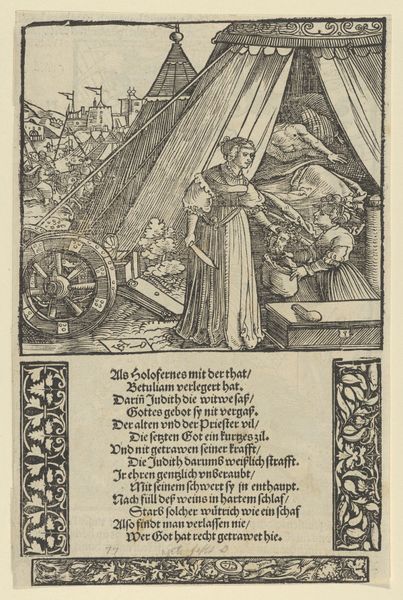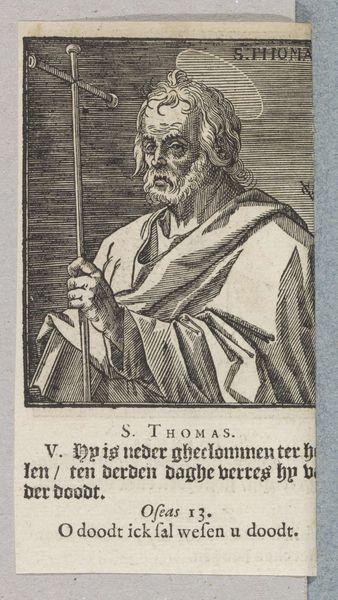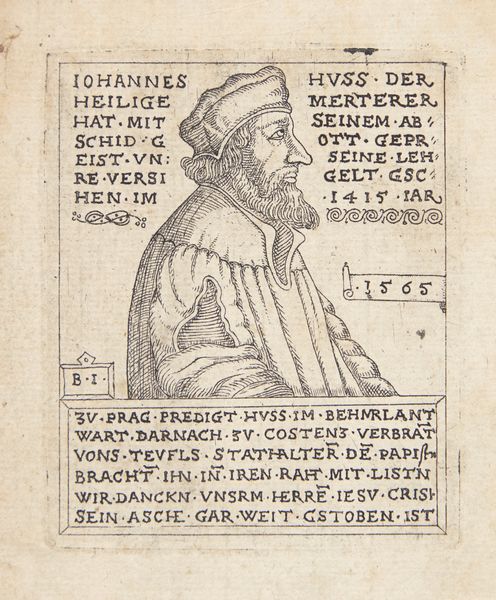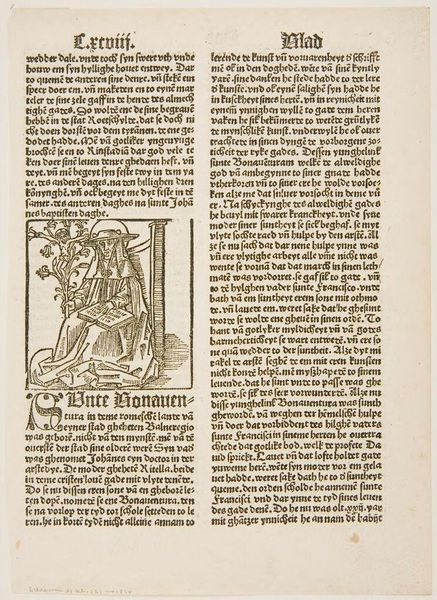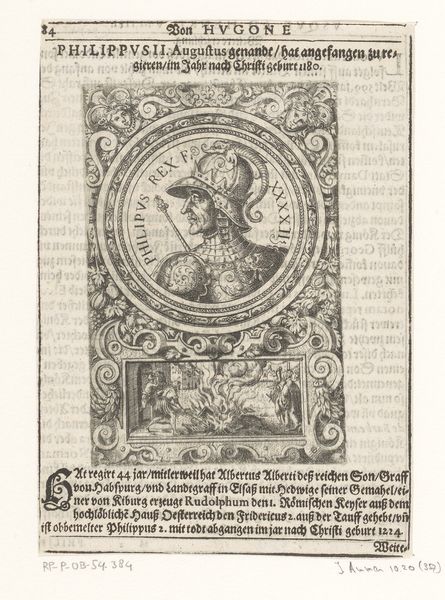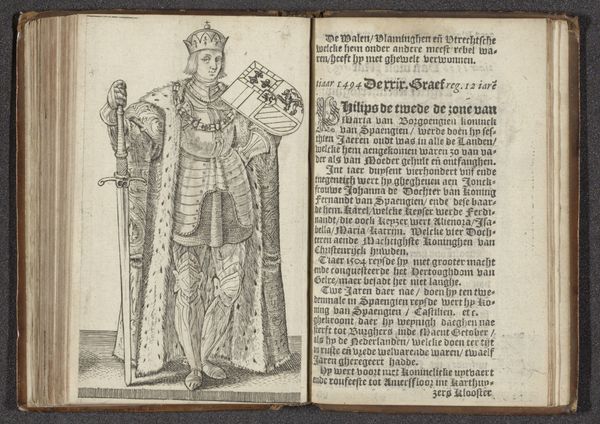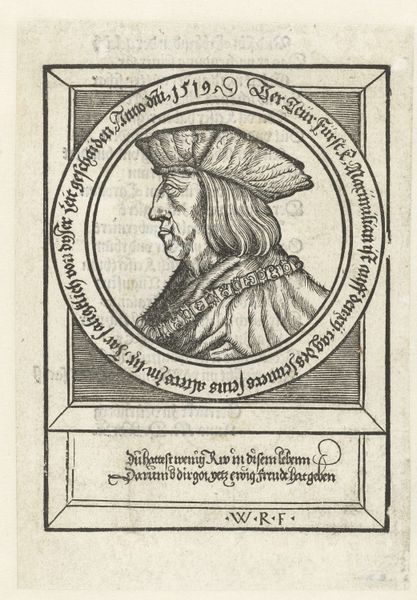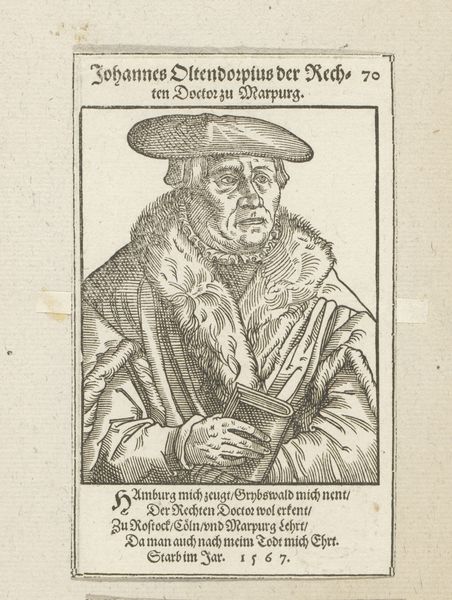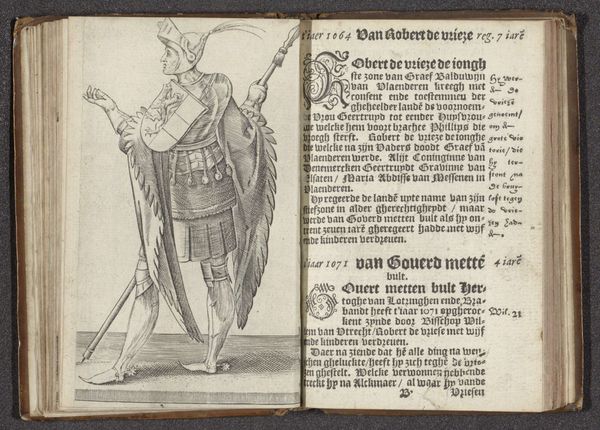
Silver Statuette of St. Jude, from the Wittenberg Reliquaries 1472 - 1553
0:00
0:00
print, woodcut
#
portrait
# print
#
figuration
#
woodcut
#
northern-renaissance
Dimensions: Sheet: 5 1/16 × 2 1/16 in. (12.9 × 5.3 cm)
Copyright: Public Domain
Editor: Lucas Cranach the Elder's woodcut, "Silver Statuette of St. Jude, from the Wittenberg Reliquaries," made sometime between 1472 and 1553, presents a powerful figure. The use of black lines creates such strong contrasts... It feels both reverent and a little stark. What do you see in this piece from a formal perspective? Curator: Initially, the texture created by the woodcut technique is fascinating. Notice how the varying density and direction of the lines define the figure's form, create the drapery folds and convey depth despite the two-dimensional nature of the medium. The contrast between the dense areas of hatching and the blank paper creates a visually dynamic surface. Editor: So, it’s less about what St. Jude represents, and more about *how* Cranach depicts him? Curator: Precisely. We should also note the figure's placement within the composition. The saint occupies the right side of the woodcut, counterbalanced by the dense block of text on the left. Consider the relationship between these two masses. Does one dominate? Do they harmonize to create an integrated whole? Furthermore, analyze the lines of the figure compared to the verticality of the text block. Editor: I see what you mean. I was so focused on the subject that I missed how the text works as a visual element. Curator: Always consider the totality of the image; the interplay between form and content is critical. What appears to be ancillary could be structural. What do you make of the base upon which the figure stands? Is its function simply support? Editor: That’s true, the base does add more detail at the bottom, countering the heavy text on top. I’ll definitely think more about those relationships. Curator: That’s all one can ask. Every element present serves an intention, if one can decode it, one unlocks further perspectives for analysis and discussion.
Comments
No comments
Be the first to comment and join the conversation on the ultimate creative platform.
